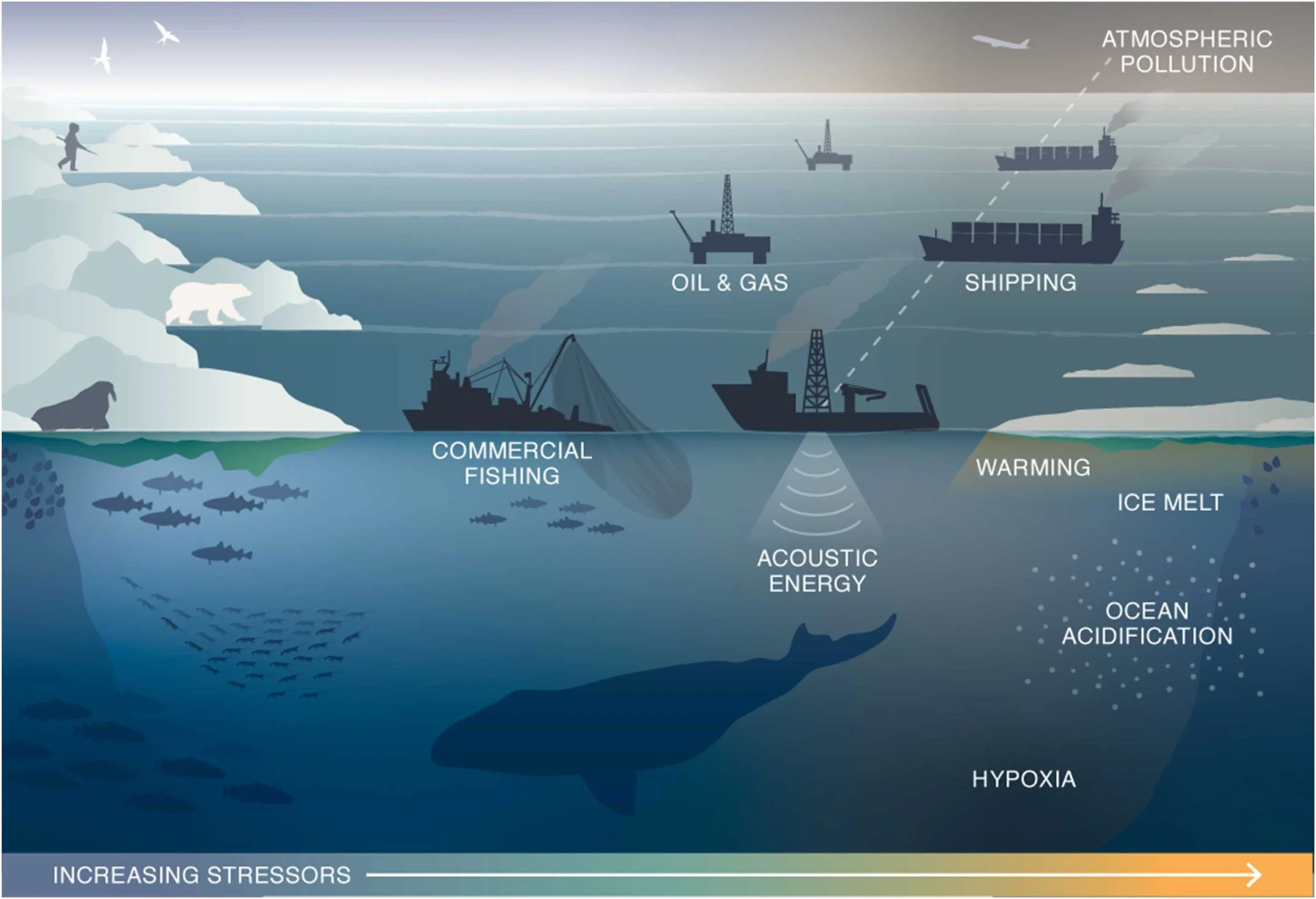A pathway for policymakers to account for multiple interacting stressors in ocean management decisions
By Rosalie Wright
Network models can help to disentangle the influence of multiple stressors on ecosystems, like climate change and atmospheric pollution, providing a valuable tool to forecast risks and compare management interventions.
A vast majority of the world’s oceans are already impacted by combinations of climate change and other anthropogenic stressors. Marine decision-making often does not account for these multiple interacting stressors, due to limited understanding of ecosystem complexity and the challenges of ecological forecasting. However, synergistic stressor interactions (whereby the combined impact is greater than the sum of individual effects) pose serious and potentially irreversible threats for our oceans through the grave loss of ecosystem functioning and integrity. Network models can help to disentangle multiple stressors and their influence on ecosystem components, providing a valuable tool to forecast risks and compare management interventions. By linking ecosystem network modeling to policy, enhanced understanding and anticipation of multiple stressors can support proactive ocean management efforts.
A collaborative project between the University of Oxford School of Geography and the Environment and the Stanford Center for Ocean Solutions has recently published a framework for integrating scientific understanding of multiple interacting stressors into decision-making processes. Focusing on a case study in the Arctic Ocean, the team considered the applicability of network modeling for mitigating stressor impacts across three domains of marine management: species-based limits, sector regulation, and spatial restrictions.
The Arctic Ocean is facing a combination of acute anthropogenic and climate-change related impacts, and is also characterized by a highly productive and relatively simple food web. It is therefore an ideal system for modeling interacting stressors to better anticipate and mitigate large-scale ecosystem consequences.
“There is a need to design proactive ocean management policies that achieve multiple, shared objectives among nations and communities. The Arctic region is both an urgent priority for action and a leading indicator of the global change to come, helping us understand how this new framework could be applied in the real world.”
Advances in network modeling approaches help to disentangle the impacts of multiple stressors on ecosystem components by offering a flexible approach to studying complex systems. A previous modeling effort led by co-author Professor Kevin Arrigo found that neglecting stressor interactions led to vastly underestimated risk of animal population crashes, highlighting the necessity of accounting for stressor interactions in comprehensive environmental risk assessment. Find out more about this work in our webstory, linked here.
Though ecosystem-based approaches are not a novel strategy, the potential for network modeling offers a new understanding of the risks from interacting stressors that may support a more proactive decision-making approach. Further, ecosystem models provide an opportunity to simulate the outcomes of management decisions, which may support the implementation of best-practice policy actions. As identified by Dr. Wedding and her team, modeling approaches can be applied to varied policy avenues, and therefore aid the development of targeted ecosystem-based management strategies.
“To manage ocean risks amidst uncertainty, it is important to anticipate how and where synergistic impacts are likely to occur in marine ecosystems and connect these scientific insights to inform ecosystem-based management decision-making”
The Oxford and Stanford team has highlighted the Arctic Ocean case study to demonstrate an opportunity to better manage marine resources and mitigate the impacts of disruption. This conceptual framework for integrating scientific insight into policy action may aid sustainable management of Arctic Ocean resources, and also provide a possible model for ecosystem-based management in other regions.
Access the Marine Policy paper here: https://www.sciencedirect.com/science/article/pii/S0308597X22003542?via%3Dihub


